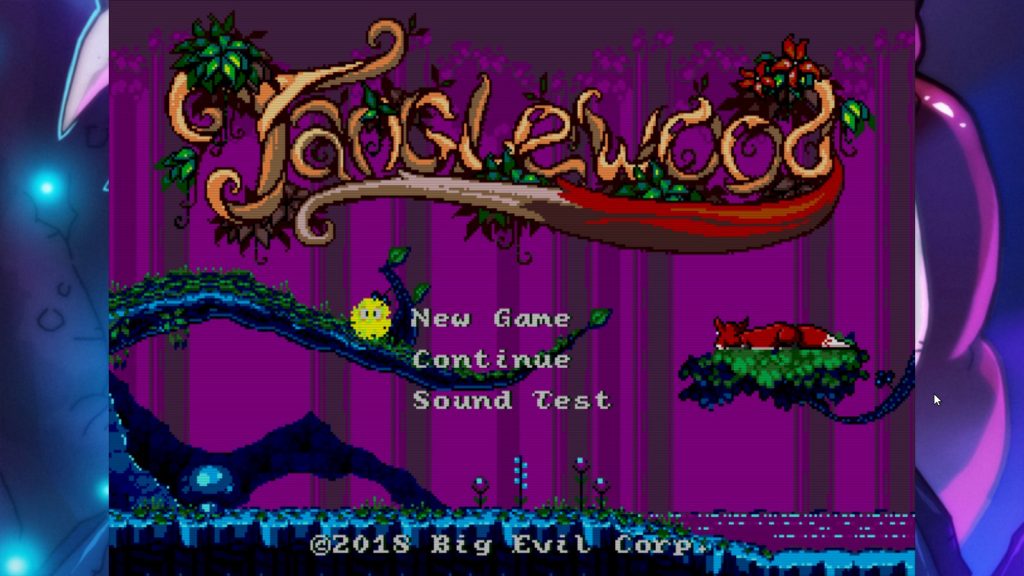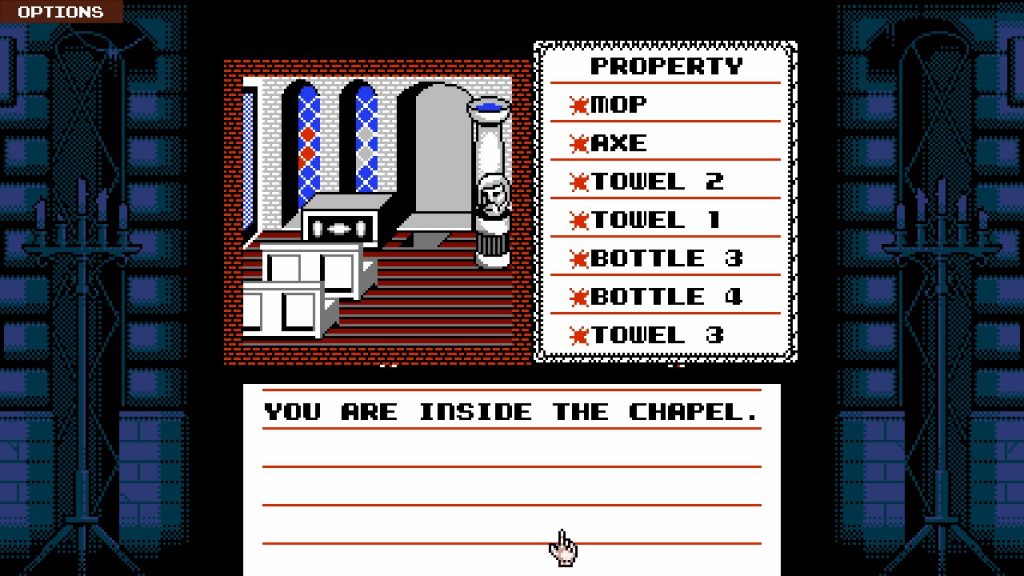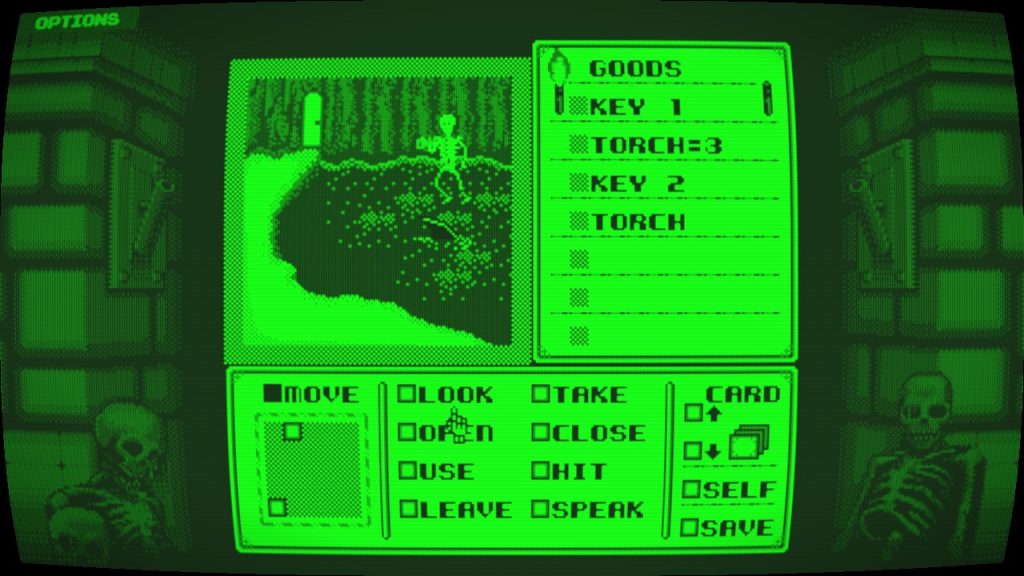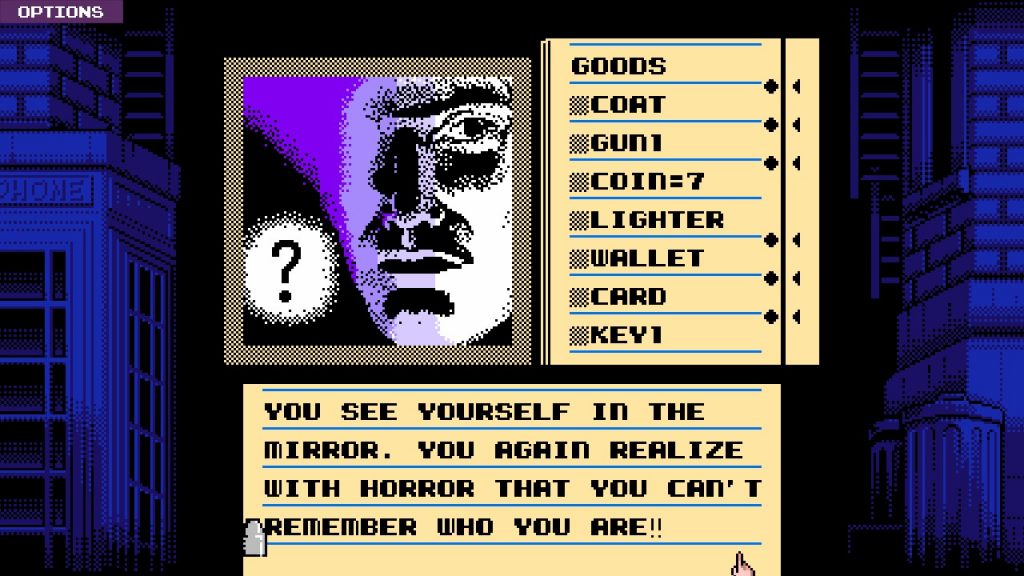A Brief Chat With Matt Phillips About Tanglewood (Interview)




Source: Review Copy
Price: £5.79
Where To Get It: Steam
Adventure games have quite the history, and it’s one with a lot of branches, and, interestingly enough, more than a couple of roots. For example, while it’s commonly accepted that CAVE, which was eventually renamed Colossal Cave Adventure, was the progenitor of Interactive Fiction (Due to the fact that anything earlier has been lost to time, it’s intriguing to note the history, as adventure games with graphics cropped up as early as 1980 (With Sierra’s Mystery House), and games with a point and click cursor (Controlled by the keyboard) came around 1983, with Project Mephius for the FM-7, a computer that released only in Japan. Indeed, part of the reason the timeline of game design is so messy is that European, American, and Japanese markets had their own home grown items that none of the others saw (Until later.)

Okay, so I’ve uncovered this… But how the heck do I open this door to the left? HRM.
Why all this preamble? To establish two things. That the adventures comprising this remake anthology are not, strictly speaking, firsts in the genre. Influential games, yes, but not firsts. But also that it’s fascinating to see changes and shifts, not just on the purely international level, but within individual nations. We’ll be briefly coming back to this, but first, the games!
The three games that comprise this trilogy were originally created in the mid 80s (1985-87) for the then humble Apple Macintosh, and, as such, were known as the MacVentures: Deja Vu, a noirish tale about an amnesiac detective down on his luck; Uninvited, a haunted house tale with the main character searching for their younger brother; and Shadowgate, a fantasy yarn that, despite the comparatively higher difficulty of the former two games, has a reputation for its gotchas and deathtraps. They had a graphic user interface, a selectable parser, and an icon based inventory, all of which were not, strictly speaking, new… But they might as well have been to the European and American audiences.
They did pretty well, well enough that a company called KEMCO ported them, with permission, to the Nintendo Entertainment System in 1989 and 1990. These are the games remade and presented in this anthology, and this, also, is interesting because the UI was changed, a controller led pointer was introduced (as in Project Mephius, several years previously), and Nintendo, a family friendly company even then, asked for… Changes. Some of these changes, I’m sure people are very grateful about: As far as I’m aware, the ten minute timer for one of Deja Vu’s “Solve this or die” puzzles (finding a cure for your amnesia) was gone. Yes, ten real time minutes. The interface was made tighter due to platform limitations, pentagrams were replaced by stars, and crosses by chalices, and, in an odd decision, it’s not the younger brother you save in Uninvited, but an elder sister.

Yep. That is indeed a greenscreen terminal filter. Yessirree.
In any case, that’s where we are today: Reviewing a port of a port of a trio of adventure games from the 80s. How do they hold up? Not that bad, actually! The Nintendo versions were not only notable for their changes, but a solid soundtrack that still holds up to this day, distinctive spritework, and an interface that, thanks to the fact we’re using a mouse rather than the NES controller, is highly accessible and a delight to use. Each could be played through over the course of an afternoon, perhaps less if you follow the ancient adventure game maxim of “Save Early, Save Often” , and only a few of the puzzles don’t have some signposting to their solution (There’s no clue, for example, that a certain ghost is afraid of spiders, sadly.) Be warned, however, that garbage items with no actual use in game abound. Old adventure games loved to do that, partly for realism’s sake (Yes, even then), but also partly to obscure solutions.
Being able to keep saves, and switch between them with relative ease? Oh yes, this is good. Having… Old monitor filters? Well, I guess it’s there? (Not gonna lie, if I wanted more eye strain, I’d just dig out my old BBC Micro and its CRT monitor. But they are nice filters.) And the writing of the games, for the most part, holds up. Deja Vu, being both a game of the 80s, and being inspired by the pulps, is perhaps the one that has aged most poorly, but there’s still some solid design there.
Also, the achievements. Ah ha ha yes, the achievements! It somewhat tickles me that the achievements for this trilogy all have to do with something you would either, unaware of this game from its heyday, stumble into, or, if you’re like me, a person amused by the death states of old videogames, actively seek them out: The deaths. Wait, you mean that lady wasn’t friendly? Gosh! And my shield could only take a few puffs of molten, superheated death spewing from a dragon’s mouth? Golly!

Well, we know we’re a dude. This much, we can be sure of.
As pieces of relatively faithfully preserved games history, this isn’t bad at all, although the “Volume 1” confuses me a little. After all, there were four MacVentures in total, so… Where would you go from here, General Arcade and Abstraction? Although it must be said, this trilogy did seem to inspire a wave of graphical adventure innovation in the West, from the Legend Entertainment games, to the Magnetic Scrolls series, each of which contributed, somewhat, to the eventual rise of the point-and-clicks we know and love today.
So yes, give these a go if you feel like experiencing some relatively solid 80s game design, and perhaps it might inspire you to check out other bits of adventure game history (Or, indeed, some of the other ports existing out there.)
The Mad Welshman enjoys older adventure games. Things tend to happen when he BITE LIP, however. Terrible things.
Much of the time, conversations with fellow members of the games industry (writers, developers… Doesn’t matter) are either shop talk or just shooting the breeze. But sometimes, things get interesting. Segue achieved for this comment, by MAIA developer Simon Roth:
“While we are on the subject, we genuinely need the equivalent of an ISBN for games.”
Most of you will at least have noticed that books have a 13 digit number on the bottom, or seen ISBN on a book’s Amazon page, but not realised how powerful those thirteen digits can be. Each edition of a book has a different ISBN. Want to find the specific edition with that typo or cover or introduction you liked, or want to compare editions? The ISBN has you covered. And I could immediately see at least part of why it’s important.
There are several different versions, for example, of roguelikes, and some of them are drastically different, such as Nethack. There are many games with exactly the same name as other games out there (While this is less often true with AAA titles, there are definitely examples, such as Powerdrome, which has an older version… And a PS2 reboot), and, to make matters worse, some games almost completely fall under the radar (For example, when choosing titles for the side videos of my current Let’s Play, which are to do with Future Racing games, I completely missed quite a few titles, including… “Future Racer”. It wasn’t very good, but it was embarassing to have missed something so obvious, because so few places refer to it.)
It would be of great use to do this, not just for gamers, who can pass around a… Let’s call it an ISGN (Because that’s the easiest acronym) instead of trying to find a reference to a game that’s only mentioned in rare places. It would be useful to archivists, and game academics, who could then have an easier time referring to the specific game when using academic notation such as the Harvard Method. It has a lot of uses… And it’s already a thing that isn’t restricted to books, with music and magazines also having their own identifiers.
…But obviously, it’s not a thing that can spring up overnight. So all I’m going to do here is leave this article, just proposing the idea (And giving fair credit to the person who originated it), and let game devs who read this to talk it over. I’ll be happy to put discussion on the subject in article form, via the usual contacts, and if enough of the games industry likes the idea, keep people posted on the progress.
But for now, it’s just an interesting and useful idea.
“Pst. Spread the word.”, and a link. A simple enough message, and if it weren’t for two things, I would most likely have skimmed over it. The first was that it was a link to an EFF article, and digital rights are a subject close to my heart. The second was that the person messaging me, Rebecca Hernandez (Videogame archivist), knows her chosen subject, and knows threats to videogame archiving and historical study. The article is here, is short, and to the point: The ESA has denied videogame archiving (The practice of preserving original elements of gaming history, such as original cartridges, code, systems and supplementary materials) an exception to the Digital Millennium Copyright Act’s Section 1201.
What does that mean? It means that the ESA has effectively taken a position of “Archiving is no different to hacking a game to get around DRM.”
It’s no real surprise that the ESA has made this move, as one of its primary goals is very similar to those of the MPAA and RIAA (To protect the interests of its member corporations in terms of copyright protection.) However, there are several things that make this position short sighted.
The History of Videogaming Is Important (And Much Has Already Been Lost)
We have not always been interested in the archiving of gaming history beyond the hobbyist collectors, and there have been many stories, over the years, of lost videogame history. Some pieces get unearthed from time to time, like prototypes of games never released, but many, many more get lost to time, improper archiving, accidents, and theft. For example, when asked about the possibility of a HD version of Homeworld Cataclysm, to go with the recent remake of Homeworld, it was mentioned (Or rather, repeated) that the source code for the game had been lost.
There are many potential factors to why this is (Copyright and assets shared among multiple studios, the closure of Relic, to name but two), but it is important to note that, if this is indeed true (And there has been no contrary evidence from any of the corporations who were involved in Cataclysm’s creation to date), then a lot of that work… Is just gone.
“But We Can Rebuild It!“
Yes, this is true. Indeed, Homeworld HD is itself a recreation, one that tries to both recreate the feel of the original game, while updating the engine and some of the mechanics… But it is not, and never will be, the original game. Why is this important? Because methods change. Because programming languages used change. Because the original Homeworld was designed for earlier architecture (Part of the reason a HD remake is “good” is that, put plainly, it will actually run on modern systems without hassle, unlike the original, which doesn’t play well, or rather, consistently well with modern systems.)
Even if the audio and art assets were used as the base for a recreation, along with what is known of how the original Cataclysm works in terms of game rules and physics, it cannot be considered, and never will be considered, anything more than a recreation. It would be a piece of gaming history, it’s true, and perhaps worthy of archiving itself. But it’s not the original.
“But We Have Abandonware/ROMs!”
About that: Those are still against the law. It’s only considered a grey area because when companies do say something along the lines of “Excuse me, we’re planning to rerelease that/we’re still selling that/we don’t want you to offer that, even though we don’t sell it anymore, because it’s still ours” , most abandonware sites listen. In the eyes of the law, it’s still piracy. And, in the case of ISOs, IMGs, CUEs and ROMs (Among many other three letter acronyms for files used in emulation) that are meant to be games for other systems? Well, I’ve got another newsflash for you there…
…None of them are the original game anymore either. Sometimes, it’s due to the circumvention of anti piracy measures (And there have been a lot of different types over the decades), sometimes, it’s due to the fact that the games are compressed and repackaged (The majority of Atari ST Disk Images fall under this category and the next). Sometimes, it’s because either the game or the emulator had to be hacked to allow the damn thing to run. For a little more detail on that, this article by Byuu of Ars Technica goes into why emulation is… Well, actually, the clue’s in the name, but the devil is in the details.
Authentic Originals are important. This doesn’t mean that the ROMs and Emulators themselves aren’t worthy of archiving. But there will always be differences, sometimes small, sometimes big, in how a game plays, looks, and acts when it’s emulated, as compared to being played on an original system. A relatively modern example would be Unreal 1 Engine games, such as Klingon Honour Guard (Microprose) or the first Aliens Vs Predator FPS (Rebellion Developments). I can tell you from experience that they were fairly fast on systems of the time, but if you play them now? You’ll have difficulties with everything from frame rate limitation to random slowdown.
“Oh, They’ll Change Their Minds Once We’ve Lost Enough 80s and 90s Games”
A lot of those have been lost already. Guess what? Beyond fans who know a game exists, but can’t find a copy? Not many fucks being given. Individual members of a games company may love a game they have created, but in the corporate sense? Once a product has become obsolete, unless signs of demand for a remade version of that product appears? There’s no reason to care about it.
If that doesn’t convince you, let me just add that between 75% and 90% of films from 1894-1930 are lost. Gone. Kaput. There’s comparatively less films lost as time goes on, but that gives you some idea of how an evolving artform (Like games, which is less than 60 years old itself) can lose the majority of its roots pretty quickly. You may have heard of Theda Bara, but I can guarantee you won’t have seen around 36 and a half of her films. Because they, also, were lost. And one of the major contributors? Lack of proper preservation methods.
“Okay, You’ve Convinced Me This Might Be An Issue. But Why Is It Bad?”
Games, like any other media, build on both our culture and what has come before, for good or for ill. Sometimes we build up, sometimes we build sideways, and sometimes, we ignore the lessons other games, and for that matter, their creators and owners, have taught us. Every time we lose all originals (or authentic copies) of a game, or its materials, we aren’t just losing a product: We’re losing sources we can analyse when studying game design, and the history thereof. We’re losing historical evidence that yes, attitudes to games were different, and so were the creators’ attitudes toward their players. We’re losing memories, and lessons, and information. And telling museums and preservation projects, such as the Internet Archive or the Videogame History Museum, that they can be charged for copyright infringement opens the door for all sorts of skullduggery.
DMCA takedowns have already been wielded to silence critics and unpopular reviews, so it’s important to ensure that archivists and educators in the game industry wishing to preserve, teach, or study gaming history, culture, and materials have the ability to do so without undue interference. Authenticity and consistency aren’t the only thing important in archiving and game studies… Security is important as well.
“What Can I Do About It, Then?”
As far as the DMCA clause 1201, there’s a comment form here . Many of these clauses are important, but as far as videogame archiving goes, subclasses 23 (Abandoned Software) and 4 (Audiovisual media for Museum/Historical/Nonprofit Use) are the most important, but subclass 1 (University/College Educational Use) would also be of use. There are other subclasses, and, if you care about how copyright is enforced, it may well be a good idea to weigh in on them.
For further reading and potential avenues of supporting videogame archiving and studies, there are several organisations and individuals you can talk to. We’ve already mentioned the Internet Archives and the Videogame History Museum, but there’s also the National Videogame Archive (UK) , Stanford’s How They Got Game Research Project (Dealing with the history of videogaming culture), DiGRA (Digital Games Research Association, on the academic studies end) , and, of course, the individual without whom this article would not exist, Rebecca Hernandez, aka 8BitArchivist , who has tirelessly campaigned for the improvement of videogame archival practices.